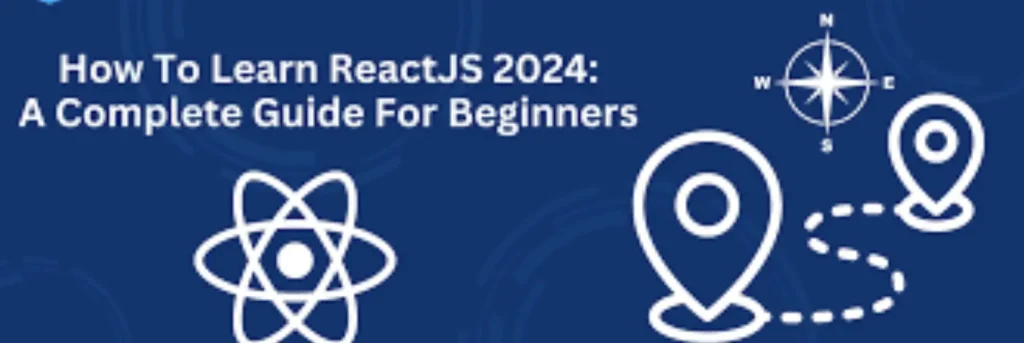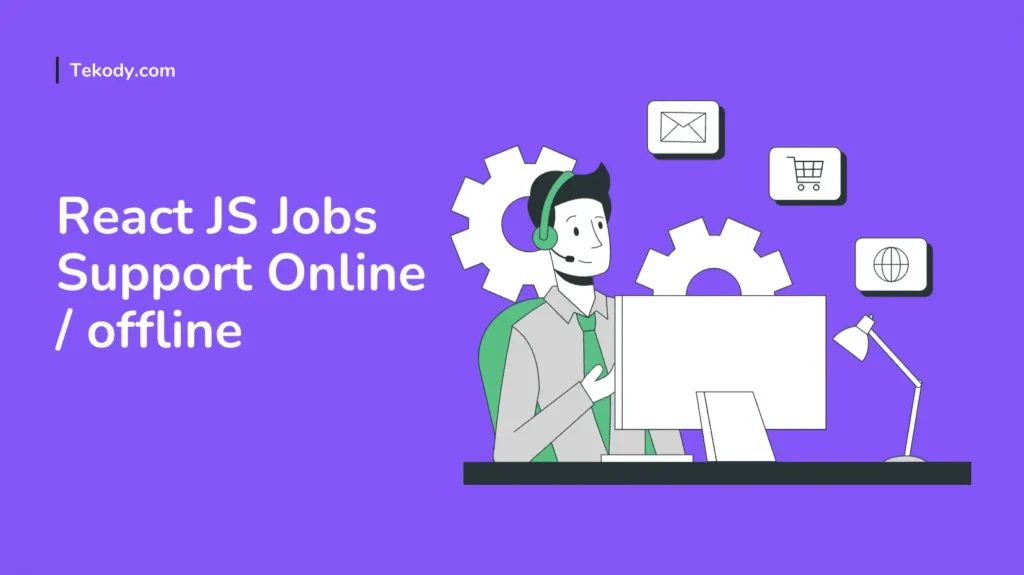How to Learn React JS: Your Ultimate Guide to Mastering React JS from Scratch
Outline
- Introduction
- Why Learn React JS?
- The Importance of JavaScript Frameworks
- What is React JS?
- Definition and Overview
- Key Features of React JS
- Setting Up Your Environment
- Necessary Tools and Software
- Installing Node.js and npm
- Setting Up a Development Environment
- Learning the Basics of React JS
- Understanding Components
- JSX Explained
- Props and State
- Advanced React JS Concepts
- Lifecycle Methods
- Hooks in React
- Context API
- React Router
- Basics of React Router
- Implementing Navigation
- State Management with Redux
- Introduction to Redux
- Integrating Redux with React
- Building Your First React Application
- Planning Your Application
- Step-by-Step Guide
- Best Practices for React Development
- Code Organization
- Performance Optimization
- Testing in React
- Learning Resources
- Official Documentation
- Online Courses
- Community and Forums
- How Long Does It Take to Learn React JS?
- Factors Influencing Learning Time
- Average Timeframes
- Tips for Learning React JS Effectively
- Consistent Practice
- Building Projects
- Staying Updated with Latest Trends
- Common Challenges and How to Overcome Them
- Debugging Tips
- Dealing with Complex State
- Career Opportunities with React JS
- Job Market Overview
- Skills Employers Look For
- Conclusion
- Recap and Encouragement
- FAQs
- How many days to learn React JS?
- Is React JS easy to learn?
- Can I learn React JS online for free?
- What is the best way to learn React JS?
- Do I need to know JavaScript to learn React JS?
How to Learn React JS: Your Ultimate Guide to Mastering React JS from Scratch
Introduction
Are you ready to learn web development with React JS? It does not matter, whether you just started to learn React JS or you are an experienced developer, learning React JS can give you more opportunities. React JS is one of the most popular JavaScript frameworks, and mastering it can significantly boost your career prospects. But how do you get started, and what’s the best way to learn React JS from scratch? Let’s explore this together.
What is React JS?
Definition and Overview
React JS, developed by Facebook, is a JavaScript library used for building user interfaces, particularly single-page applications. It’s renowned for its efficiency and flexibility, allowing developers to create interactive UIs with ease.
Key Features of React JS
- Component-Based Architecture: Build encapsulated components that manage their own state.
- Virtual DOM: Enhances performance by updating only the parts of the DOM that need to change.
- One-Way Data Binding: Ensures that changes in the model state automatically reflect in the view.
Setting Up Your Environment
Necessary Tools and Software
Before you start, There are some prerequisite:
- A code editor
- Node.js and npm (Node Package Manager)
Installing Node.js and npm
Visit the Node.js official website and download the installer. npm is automatically installed along with Node.js on your machine, so no need to install it separately.
Setting Up a Development Environment
Once you have Node.js and npm installed, set up your project directory and initialize it with npm:
npm init -y npm install react react-domLearning the Basics of React JS
Understanding Components
Components are the small – small building blocks of a React application. They can be functional or class-based and are used to define parts of the UI.
JSX Explained
JSX stands for JavaScript XML. It allows you to write HTML-like code within JavaScript, making your code easier to understand and maintain.
Props and State
- Props: Short for properties, props are used to pass data from parent to child components.
- State: State is managed within the component and can change over time, influencing what gets rendered.
Advanced React JS Concepts
Lifecycle Methods
Lifecycle methods are built-in methods in class components with features that allow you to run code at specific times in a component’s life.
Hooks in React
With the help of Hooks, you can manage the state in functional components as we manage it in class components and it also helps in performance improvement. Common hooks include useState, useEffect, and useContext.
Context API
The Context API provides a way to manage state globally across the application and you can pass data through the component tree without doing props drilling.
React Router
Basics of React Router
React Router is a standard library for routing in React. With the help of React Router, we can register our Component with specific routes and we can navigate among the view in a React application.
Implementing Navigation
To use React Router, install it using npm:
npm install react-router-domThen, set up your routes in the main component.
State Management with Redux
Introduction to Redux
Redux is a state management library for JavaScript apps. you can manage the state of your application predictably by using Redux Js.
Integrating Redux with React
To integrate Redux with React, you’ll need to install redux and react-redux packages:
npm install redux react-reduxThen, create a store and connect your components.
Building Your First React Application
Planning Your Application
Before you start coding, plan the structure and functionality of your application. Define the components and their interactions.
Step-by-Step Guide
- Set up your project directory.
- Create and organize components.
- Implement state management.
- Add styles and test your application.
Best Practices for React Development
Code Organization
Keep your code clean and organized by following a consistent structure. Group related files and components together.
Performance Optimization
We can optimize performance by using React’s memoization techniques and also we can avoid unnecessary re-renders.
Testing in React
Use tools like Jest and React Testing Library to write tests for your components, ensuring they work as expected.
Learning Resources
Official Documentation
The React official site document is the right place to start. It provides comprehensive guides and tutorials.
Online Courses
Platforms like Udemy, Coursera, and freeCodeCamp offer excellent React courses for all skill levels.
Community and Forums
Join React communities on Reddit, Stack Overflow, and GitHub to connect with other learners and professionals.
How Long Does It Take to Learn React JS?
Factors Influencing Learning Time
Your background in JavaScript, the time you dedicate, and the complexity of the projects you undertake will affect how quickly you learn React.
Average Timeframes
On average, with consistent effort, you can expect to become proficient in React within 3-6 months.
Tips for Learning React JS Effectively
Consistent Practice
Consistency is key. Set aside time each day to practice and experiment with React.
Building Projects
You can build small – small projects while you are learning to apply what you’ve experienced and learned and gradually, you can increase the complexity of sample projects as you gain confidence.
Staying Updated with Latest Trends
React is constantly evolving. Stay updated by following React blogs, attending webinars, and participating in community events.
Common Challenges and How to Overcome Them
Debugging Tips
Use browser developer tools and React DevTools to debug your applications efficiently.
Dealing with Complex State
Break down your state management into manageable pieces. Use tools like Redux or Context API for large applications.
Career Opportunities with React JS
Job Market Overview
The demand for React developers is high, with opportunities in various industries such as tech, finance, and healthcare.
Skills Employers Look For
Employers look for strong JavaScript skills, experience with modern front-end tools, and the ability to build responsive, scalable applications.
Conclusion
Learning React JS can be a rewarding journey that opens up numerous opportunities in web development. By following this guide, practicing consistently, and utilizing the resources available, you’ll be well on your way to mastering React JS. Stay curious, keep building, and enjoy the process!
FAQs
How many days to learn React JS?
It varies, but with consistent daily practice, you can start building basic applications within a few weeks.
Is React JS easy to learn?
If you have a solid understanding of JavaScript, learning React JS can be straightforward.
Can I learn React JS online for free?
Yes, there are many free resources available, including the official React documentation, freeCodeCamp, and YouTube tutorials.
What is the best way to learn React JS?
The best way is a combination of reading documentation, taking courses, building projects, and participating in the community.
Do I need to know JavaScript to learn React JS?
Yes, a solid understanding of JavaScript is essential as React is a JavaScript library.



